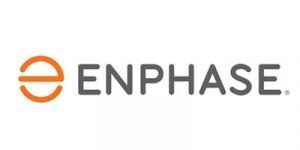„We’re seeing heightening inflation expectations, or a change in corporate behaviour,“ he added. „In the past, it was hard for companies to hike prices. But as more and more companies began raising prices, those who were hesitant are starting to follow suit. We’re scrutinising developments at each policy meeting, but I think the peak (of price hikes) is nearing.“ The bank also holds regular press conferences by the chair of the Policy Board—the Governor—to explain monetary policy decisions. The bank also releases its transcripts 10 years later to provide transparency regarding Policy Board decisions. Already, markets are guessing what the BOJ’s next move could be as Kuroda’s term draws to an end and with inflation expected to remain above its 2% target well into next year. Inflation has consistently exceeding its 2% target for 15 straight months, while wages are finally starting to increase after years of stagnation.
The Federal Reserve is considering the monetary tools it will use to bolster the economic recovery from the COVID-19 crisis. The Fed has already reduced interest rates to near zero and used two tools it how to invest in mining stocks deployed during the Great Recession—forward guidance and quantitative easing (QE). In addition to these, Fed officials are now talking about yield curve control, sometimes called interest rate caps.
But BOJ policymakers have maintained that inflation could be transitory due to factors such as global oil prices, and may not
reflect a solid pick-up
in economic activity. Markets have been rife with speculation the BOJ will soon end negative rates and its yield cap, as Japan’s ultra-low rates draw criticism for weakening the yen and pushing up import costs. The central bank made no change in its forward guidance, retaining a pledge to „take additional easing measures without hesitation“ if needed – language some market players thought might be changed to take on a more neutral tone. It also left unchanged an allowance band of 50 basis point set either side of the yield target, as well as a new hard cap of 1.0% adopted in July. But he stressed the need to spend more time assessing data, particularly wages and service prices, before raising interest rates. TOKYO, Oct 2 (Reuters) – The Bank of Japan said on Monday it would conduct additional bond buying operations, seeking to slow a rise in yields after the benchmark reached its highest in a decade.
Outlook for Economic Activity and Prices
„Since we published the July outlook report, inflation isn’t overshooting sharply. But it’s not slowing as much as we expected,“ Ueda said at a press conference Friday, in a translation provided by Reuters. The governor of the Bank of Japan (総裁, sōsai) has considerable influence on the economic policy of the Japanese government. JPY/USD reached 80yen/$, so the BOJ reduced the office bank rate to 0.5% and the yen recovered. [PRO] Luxury playsBank of America upgraded three luxury stocks that are bucking the negative trends afflicting the broader sector in Europe.
- Years of accommodative monetary policy in Japan — even as other global central banks have tightened policy in the last 12 months — have concentrated carry trades in the Japanese yen.
- Ueda said the BOJ wanted to reduce distortions caused in bond prices and keep volatility from heightening in the exchange-rate market.
- In this scenario, the Fed might have to purchase only a limited number of bonds in order to keep prices at the target, and yields on other private-sector securities would be more likely to fall in line with those on government securities.
- In a rare acknowledgement of the drawbacks of his policy, Kuroda said the decision to widen the yield band now came from surveys showing a sharp deterioration in bond market functions.
Japan’s central bank maintained its ultra-loose policy and left rates unchanged on Friday, mindful of the „extremely high uncertainties“ on the growth outlook domestically and globally. In 1999, the BOJ started zero-interest-rate policy (ZIRP), but they ended it despite government opposition when the IT bubble happened in 2000. However, Japan’s economic bubble burst in 2001 and the BOJ adopted the balance of current account as the main operating target for the adjustment of the financial market in March 2001 (quantitative relaxation policy), shifting from the zero-interest-rate policy. From 2003 to 2004, Japanese government did exchange intervention operation in huge amount, and the economy recovered a lot.
Likewise, if the BoJ has a dovish view on the Japanese economy and keeps the ongoing interest rate, or cuts the interest rate it is negative, or bearish. The Bank of Japan (BoJ) Board members shared their views on monetary policy outlook and Yield Curve Control (YCC), per the BoJ Minutes of the September meeting. YCC worked well when inflation was low and prospects for hitting the BOJ’s price target were slim, as investors could sit on a pile of government debt that ensured safe returns. Under attack from investors betting on a rate hike, the BOJ doubled the band in December to 0.5% above or below zero and ramped up bond buying to defend the ceiling. While bond markets have been stable recently, the BOJ wanted to pre-empt another bout of volatility that could be caused by higher-than-expected inflation, Ueda said.
USD/JPY bears disappointed by BoJ may mark a top
In March 2021, the bank widened the band to 0.25% either direction to breathe life back into a market its buying had paralysed. In addition to connections with terminals, direct connection with participating financial institutions‘ computers is possible. It also maintained guidance allowing the 10-year yield to move 0.5% around the 0% target, but said those would now be „references“ rather than „rigid limits“.
Markets
Japan’s gross domestic product growth for the April-June quarter was revised down to an annualized 4.8% from the preliminary 6% print due to weak capital spending. „Comments from the BOJ Governor seems to reveal a continued lean into the dovish camp, at least for now, which led recent hawkish bets to question if they have got ahead of themselves,“ said Yeap Junrong, a market strategist with IG Asia in Singapore. The Osaka branch in Nakanoshima is sometimes considered as the structure which effectively symbolizes the bank as an institution. Following the passage of the Convertible Bank Note Regulations (May 1884), the Bank of Japan issued its first banknotes in (Meiji 18). Despite some small glitches—for example, it turned out that the konjac powder mixed in the paper to prevent counterfeiting made the bills a delicacy for rats—the run was largely successful.
all the news
But he also said the bank could tweak policy further if the likelihood of sustainably hitting its 2% inflation target heightens, underscoring the sharper focus on price pressures. While output gap grew 0.4% in the second quarter to mark the first increase in 15 quarters, uneven domestic high risk stocks economic data and an uncertain global economic outlook have made it more complex for policymakers. Any delay would also also put more pressure on Japanese Prime Minister Fumio Kishida, who pledged to help consumers cope with rising living costs at a cabinet reshuffle last week.
Sustainable inflation
Although the market is testing the upside of the BOJ’s bond yield target now, when the bank adopted YCC in 2016, it was trying to stop interest rates from falling too low. The move to broaden the permissible range for 10-year JGB yields of around plus and minus 0.5 percentage points from its 0% target to 1% was seen as the start of a gradual departure from the yield curve control policy enacted by Ueda’s predecessor. It also reflects the broader challenge central banks have faced globally in trying to effectively communicate a shift to less accommodative policy after an extended period of unorthodox monetary settings.
U.S. Treasury yields spiked after an earlier Nikkei report suggested the BOJ will allow „long-term interest rates to rise beyond its cap of 0.5% by a certain degree.“ The Bank of Japan is expected to keep its basic policy settings intact yet again, most notably the “around zero percent” yield on the 10-year bond. In the quarterly forecasts, the BoJ is expected to trim its 2021 GDP projection but nudge up 2022. Inflation forecasts are likely to remain below the 2% target through 2023 – no troubling inflation surge in Japan at this stage.
The Brookings Institution is a nonprofit organization based in Washington, D.C. Our mission is to conduct in-depth, nonpartisan research to improve policy and governance at local, national, and global levels. In short, YCC might be a promising tool to support the recovery from the COVID-19 recession, but only if the Fed can achieve a smooth and credible implementation what umarkets forex broker offers you when investing your money of the policy. The BOJ’s action highlights the challenge it faces in balancing the risk of higher inflation and the need to keep supporting a nascent economic recovery. BOJ Governor Kazuo Ueda brushed aside the view that the move was a step towards policy normalisation, instead describing it as a pre-emptive move against the risk of too-high inflation.
Monetary Policy Meetings
As widely expected, the BOJ maintained its short-term interest rate target of -0.1% and that for the 10-year bond yield around 0% at a two-day meeting that ended on Friday. Japan’s central bank said it will buy Japanese government bonds with between five and 10 years left to maturity on Wednesday, with the purchase amount to be announced at the time of the operation. Researchers and FOMC members have also said that a rate peg may be an effective complement to forward guidance and QE, two policies that are already firmly part of the Fed’s toolkit. First, forward guidance and a zero-rate peg on near term-securities are mutually reinforcing, because they both tell markets to expect low rates for a while.
One reason is that many private investors in JGBs buy the bonds to hold, rather than trade, them. This implies that some investors—e.g., big institutions who prefer or are required to have a stock of safe government bonds—are willing to hold JGBs even if they expect that short-term rates will rise before the bonds mature. Treasuries, in which investors buy and sell bonds frequently as they update their expectations about rates.



